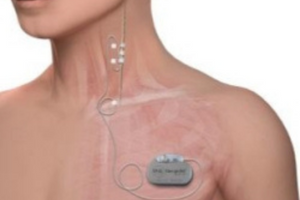
New research which investigated the long-term efficacy of Vagus Nerve Stimulation (VNS) in people with epilepsy has recently been published in leading epilepsy medical journal, Epilepsia.
The VNS is a medical device used in the treatment of epilepsy which is similar to a cardiac pacemaker. The implantation of VNS is most commonly a surgical procedure - with the device placed in the left side of the chest and in the neck. The VNS device sends regular, mild electrical stimulation to the brain via the vagus nerve. This mechanism works to reduce the frequency and intensity of seizures in some people with epilepsy.
The research was conducted by a team in Norway who were seeking to establish the long-term outcomes of VNS treatment in patients with epilepsy.
The study involved 436 patients who had received a VNS to treat their epilepsy including both adults and children. Researchers assessed the patients’ condition at regular intervals over a 5-year period following the commencement of VNS treatment (at 6, 12 ,24, 36 and 60 months).
The study reported positive findings regarding the long-term efficacy of the VNS. Key findings include:
- The probability that a patient fitted with a VNS would experience at least a 50% reduction in seizure frequency was 60%. In assessing epilepsy treatments, a 50% reduction in seizure frequency is typically considered to be the standard for a clinically meaningful change.
- The effect of VNS on seizure reduction increased over time where the person’s epilepsy medications were unchanged.
- Patients without intellectual disability had a higher chance of achieving more than 75% seizure reduction or seizure freedom.
- Patients who developed epilepsy because of a stroke, traumatic brain injury or other illnesses were found to have significantly better outcomes with VNS.
- The treatment was generally well tolerated, and most of the adverse effects reported initially improved over time and with changes incorporated to the settings of the VNS.
Researchers also discovered that 6 months and 2 years after the implantation of a VNS were key markers in predicting the potential impact of VNS treatment. Those who indicated that they were experiencing a 25% - 50% seizure reduction after 6 months post VNS treatment were more likely to go on to become seizure free or experience significant seizure reduction long-term. It was also found that if patients were reporting 75% seizure reduction at 2 years post implantation, there was a higher likelihood that positive effects would remain at 5 years.
Another positive finding was that the incidence of SUDEP appears to be lowered in patients using VNS. The authors state that the SUDEP rate in the study group was about 1/3 of that reported in studies of patients who have had epilepsy surgery. Finally, researchers reported there was no notable difference or patterns between adults and children that had been fitted with a VNS. (Further information on SUDEP can be found by visiting the information resource on our website.)
This study is significant as it has provided long-term evidence from a large cohort of patients with epilepsy regarding the potential positive impact of VNS treatment. The findings reported are based off approximately 90% of all patients with epilepsy in Norway who were fitted with VNS between 1993 and 2012. While the prospect of having a VNS fitted can be daunting for many people with epilepsy, we hope that these comprehensive findings offer reassurance on the likelihood of long-term seizure reduction. The findings will also be very useful to clinicians in determining which candidates are most likely to benefit from VNS, for example those with post-stroke or post-traumatic epilepsy.
You can read the study in full by visiting the Epilepsia website.
